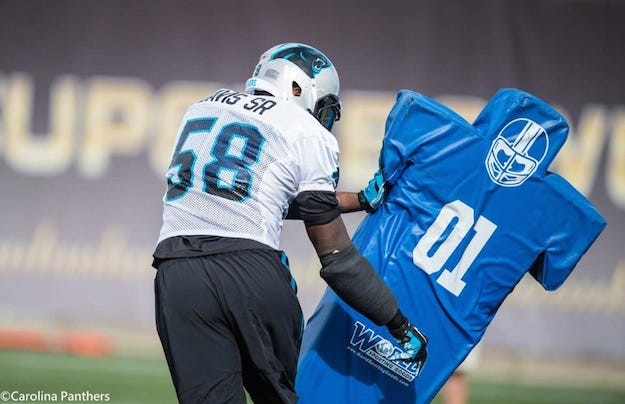How 3-D Printing Played a Role in the Super Bowl
March 8, 2016
In case you missed it, last month's Super Bowl 50 marked the first time an NFL player wore a 3-D printed medical device at the game.
Qmed Staff
|
Thomas Davis tried out the 3D-printed brace during practice. (Image courtesy Carolina Panthers.) |
The Carolina Panthers may have fallen to the Denver Bronco's in last month's Super Bowl 50. But Panthers Thomas Davis was still connected to a "first": the first time a football player has worn a 3-D printed medical device during a football game.
Qmed's sister UBM media outlet Plastics Today explains how a Davis' right forearm, broken in the NFC championship game, was held together a metal plate held together with 12 screws. If Davis was to play, he needed something to shield his arm from the 1600-lb impact force of a tackle.
The solution came from Whiteclouds, a 3D-printing lab headquartered in Ogden, UT. Whiteclouds scanned Davis' arm, using its XRD technology to design a 3D-printed shock-absorbing brace made out of a blend of plastic and rubber-like materials.
Read to full Plastics Today story.
Learn more about medical device design at BIOMEDevice Boston, April 13-14, 2016. |
Chris Newmarker is senior editor of Qmed and MPMN. Follow him on Twitter at @newmarker.
Like what you're reading? Subscribe to our daily e-newsletter.
About the Author(s)
You May Also Like


.png?width=300&auto=webp&quality=80&disable=upscale)
